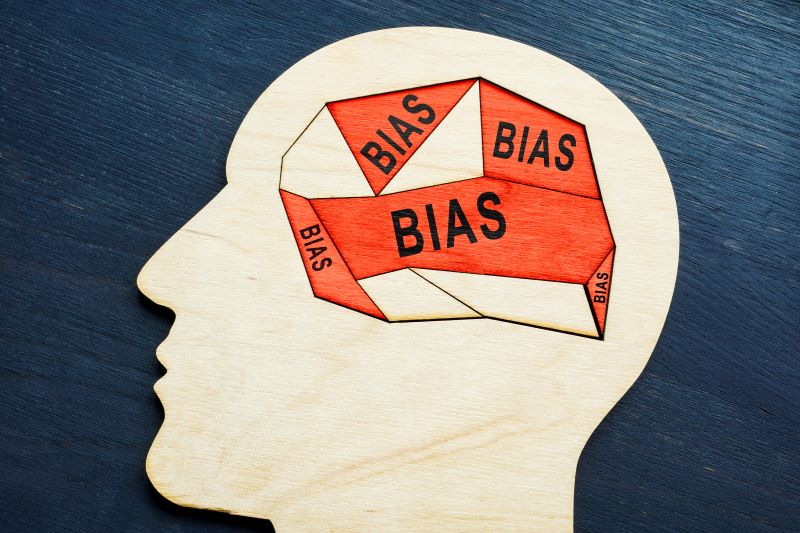

Understand Financial Biases To Protect Your Retirement
If you are a highly successful individual who is getting ready to retire or you have recently retired, you likely have been disciplined with your savings efforts. In fact, part of your saving strategy might have been researching the various financial investment alternatives available.
However, there is one aspect of investing you may not have considered as deeply: the mental and emotional biases that can influence our decisions. Making sound investment decisions requires at least some knowledge of the biases that could potentially obscure judgment. This is especially important when you are getting ready to retire and/or are already retired.
Why is this so important? Because your primary “earning” years are behind you. So, your ability to protect your principal savings is critical to ensuring that you have enough money to last the remainder of your life (especially when markets are volatile as they currently are). Everyone has default mental and emotional biases that can potentially hinder them.
Like driving a car slightly out of alignment, you can learn to compensate for an internal tendency to pull to one side of the road or another. In other words, deliberately objective decision-making, like driving straighter on roads, leads to more optimal asset allocation.
This article answers the following questions:
- Can knowing yourself make your roadmap to wealth easier?
- What are cognitive financial biases?
- Are some investors 100% bias-free?
- Why do optimal financial decisions require internal insight?
- What are emotional biases?
- How do cognitive and emotional monetary biases differ?
The Value of Financial Planning: Investor Quirks
As you navigate your retirement, there are several things to consider. Most people think about the actions you need to take. For example, tax planning, income planning post-retirement, social security distributions, and avoiding debt.
However, if life were as simple as thinking of the desired action and taking it, many things would be different: There would be a much higher success rate with New Year’s resolutions, fewer divorces, and much busier gyms.
People are complex, with psychological underpinnings that aren’t always obvious or simple to manage. That is why it is vital to understand your internal motivations (and biases, should you need to compensate for them) to succeed at investing.
Thankfully, the science of behavioral finance can help us identify monetary tendencies that could otherwise prove self-destructive to your retirement plans. In fact, the FinLife tools we use to help us see your motivations as we plan can also help reveal possible cognitive or emotional biases. When this happens, we can work with you to help you overcome them.
Everybody is susceptible to developing a bad money habit at some point in life. The key to breaking them is overwriting them with good ones. In this case, that means learning to say to yourself, for example, “I heard an investment expert on TV say that you should move your investments to all-cash when the markets are volatile… but while he sounded like he knew what he was talking about, is that the right course of action for me?”
Your bias might be to agree with “experts” in the media. However, that might not be the optimal approach to your specific situation.
Discover the Advantages of Investment & Retirement Planning With a Fiduciary Financial Advisor
Wealth Management Goals: Be Prepared for Biases

No mortal being is entirely bias-free. Our goal is to proactively anticipate the problem ones, not to make you inhumanly objective. In fact, biases might be like bacteria, in the sense that getting rid of 100% of them could be unhealthy.
Behavior finance has identified both cognitive and emotional biases that can sidetrack investors. The cognitive ones have to do with decision-making in regard to established concepts. Those concepts may or may not be true (which is where the problem often lies).
Emotional biases surface when we let our feelings drive decision-making. We watch for both types of bias—and there are ten we pay particular attention to:
- Anchoring: This bias involves people relying too heavily on pre-existing data. In some cases, they cling to the first information they read or hear.
- Confirmation: People who pay exclusive attention to data that affirms their beliefs—while ignoring all other relevant information—have this bias.
- Endowment: When a particular asset is considered special and of superior value only because an investor owns it, they have an endowment bias.
- Framing: Making decisions based on how information is presented rather than on the facts exclusively usually stems from a framing bias. You may even be able to present the same exact data in two different ways and get two contradicting responses.
- Herd Mentality: This might be described as a run-with-the-crowd or monkey-see-monkey-do bias. This one leads investors to follow even completely irrational trends because everybody else is doing it.
- Hindsight: You might call this one the I-told-you-so bias. In essence, it involves an investor’s belief that they could have anticipated negative circumstances and reacted accordingly.
- Loss Aversion: People with this bias tend to fear taking a loss so much that they let it keep them from potential gains. No one likes to lose, but taken to an extreme, this aversion can keep an investor from capitalizing on rare and even lucrative opportunities posing very minimal risk.
- Overconfidence: Just like it sounds, the overconfidence bias leads investors to view their skills, talent, or intellect as less fallible than they really are.
- Representative Heuristic: This bias involves inappropriate certainty regarding an outcome’s probability (based solely on the similarity of events or objects).
- Self Attribution: Investors with a self-serving bias often attribute positive outcomes solely to their own skills. Meanwhile, they view unfavorable outcomes exclusively as bad luck.
Remember Your Roadmap to Wealth

We do not have the space here to get into 100% of all the biases known to the world, but we detail some of them a little more deeply in this article. Even a successful and diligent investor’s progress can be delayed by falling prey to the cognitive and emotional biases outlined by behavioral finance.
Things like trusting what is familiar, holding on too long to losses, feeling like current market conditions will go on forever, blindly following the herd, and other natural human tendencies undermine our progress toward financial freedom.
That’s why at ViaWealth, we know that a goals-based financial plan is just one part of your overall retirement strategy to maximize your success. Having the self-knowledge to consistently execute sound decisions is just as impactful. In fact, without it, your odds of reaching the finish line can be compromised. A comprehensive plan needs a comprehensive approach.
If you have not already, contact us for a financial portfolio review. In addition to seeking investment advice for overcoming biases, now is a great time to ensure that your financial future stays well protected.


